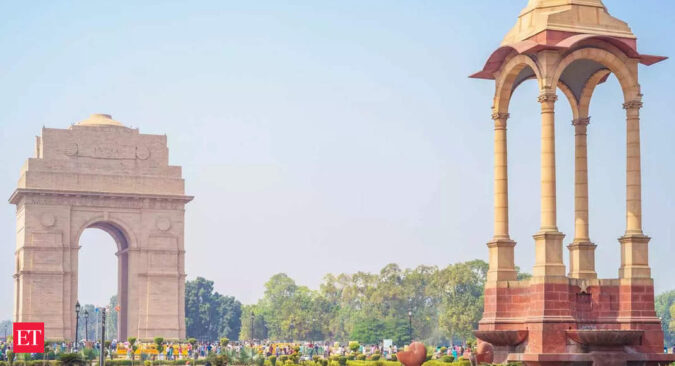Besides proposing to boost infrastructure growth, the voluminous vision document also includes norms for heritage zones, archaeological parks and cultural precincts as well as instruments for improving conservation of heritage buildings to promote Delhi’s rich history and culture.
It suggests for “identification and preparation of conservation and revitalisation management plans (CRMPs) for cultural precincts, permits adaptive reuse of heritage buildings”, according to a statement issued by the DDA on Tuesday.
The officials said the master plan also suggests constitution of heritage cells.
It also proposes to promote the development of cultural and entertainment hubs and emphasises on the development of city hubs, circuits, plazas, and night-time circuits.
Specific corridors and trails will be identified for promoting the night-time economy.
The plan also proposes the rejuvenation of the Yamuna and its floodplain through preparation of comprehensive river development plan for the river as also enhancing Delhi’s preparedness for climate change impacts and in tackling pollution, the statement said. The first master plan was promulgated in 1962 under the Delhi Development Act, 1957. These plans are prepared for 20 years’ perspective periods and provide a holistic framework for planned development of the city.
The draft Master Plan of Delhi – 2041 is a “strategic” and “enabling” framework to guide future growth of the city, built upon the lessons learnt from the implementation of the previous plans and based on learnings from across the country with respect to implementation of various projects and schemes.
The draft has been divided into two volumes comprising 10 chapters. The vision for Master Plan of Delhi – 2041 is to “foster a sustainable, liveable and vibrant Delhi”, officials said.
Creating extensive transport infrastructure, affordable housing for all, healthy environment and “24-hour city” with night-time economy and checking unauthorised colonies and pollution are part of the guiding principles on which the DDA laid out the draft Master Plan of Delhi – 2041.
The vision document largely covers the policies of environment, economy, mobility, heritage, culture and public spaces.
The draft Master Plan of Delhi – 2041 was first approved by the Authority, the DDA’s apex body, on April 13, 2021, and then made available in June the same year on its website, inviting public suggestions and objections.
In October 2021, the DDA said it had received nearly 33,000 objections and suggestions in the stipulated time period.
The advisory council of the DDA, headed by the Lt Governor, last April reviewed the draft while incorporating the objections and suggestions.
Authorities working on the Master Plan of Delhi – 2041 had received various suggestions from on preservation of built heritage, which includes setting up a dedicated cell to promote conservation of architectural legacy in the Walled City, official sources said in December 2021.
People who have suggested creating a “heritage cell”, had said it was required because there was “inadequate provision for financial assistance” for undertaking conservation of heritage structures in the area.
Shahjehanabad or Old Delhi or the Walled City was built by the Mughals in the 17th century as its imperial capital and is endowed with old buildings, houses, shops, centuries-old havelis and religion sites, including the iconic Jama Masjid, and other rich cultural heritage.
New Delhi, built by the British as a new imperial capital over a period of two decades after the capital was shifted from Calcutta (now Kolkata) to Delhi, is also home to a very large number of iconic heritage buildings, both public and private.
The approved draft Master Plan of Delhi – 2041 will now be forwarded to the Union Ministry of Housing and Urban Affairs for final approval and notification, the officials said.
